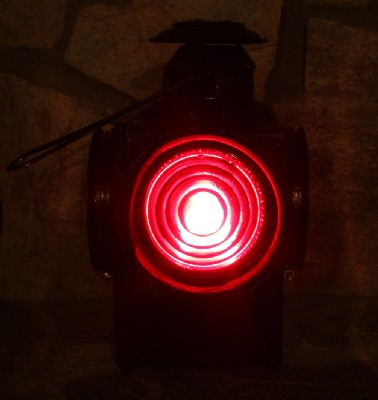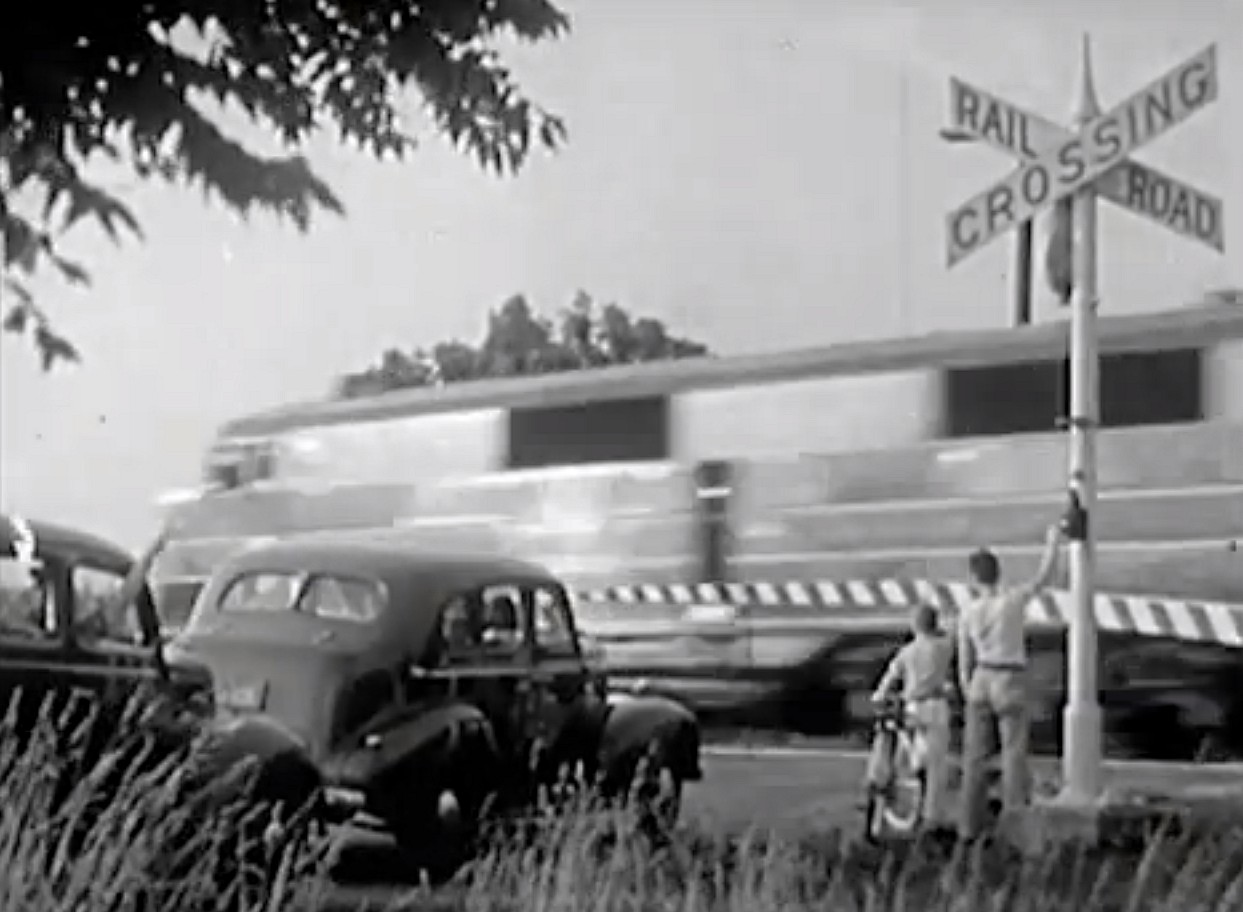
JeffPo's Dressel Crossing Gate Lamp Page #2
Last update: 09/01/10

This is a railroad lamp made by the Dressel company. It stands about 10.5", not including the handle. The purpose of this lamp was to serve as a marker on a manned crossing gate. Note that this lamp differs from my other Dressel crossing gate lamp in that it is four-way lamp instead of two-way. It also has a square body instead of a rounded one.

Access to the rectangular fuel fount is provided by a sliding panel. This lamp and fount use a Dressel No. 1 burner. This burner does not use a chimney. Note that the wick adjuster on the burner is contained within the lamp, necessitating the opening of the panel to adjust the flame.
It has two red lenses opposite of each other and two white/clear lenses opposite of each other. As a train approached, the gate was moved into place to stop any traffic attempting to cross the railroad tracks.

The white/clear signal lights would be seen by the train, as a signal that all was clear for it to proceed.

The red signal lights would be seen by the road traffic as a signal that they should stop because of the approaching train. While there are different color signals that vary based on their application, a red signal is the universal stop signal. Also note that the red lenses are hooded, presumably to prevent the locomotive engineer from seeing any portion of the red signal and thinking he had to stop.


Here you see the lamp in action. There's no mistaking that bright red signal for anything other than STOP. Today's modern railroad crossings have electric lights, bells, and mechanical arms that lower with the approaching train. That's quite a contrast to this lamp, which was manually lit, maintained, and moved into place by a railroad worker.


This is a screen shot from a 1940 documentary film of a Baltimore & Ohio (B&O) passenger train. Notice the single lens crossing gate lamp hanging on the crossbuck pole, just above the boy that is waving to the train.